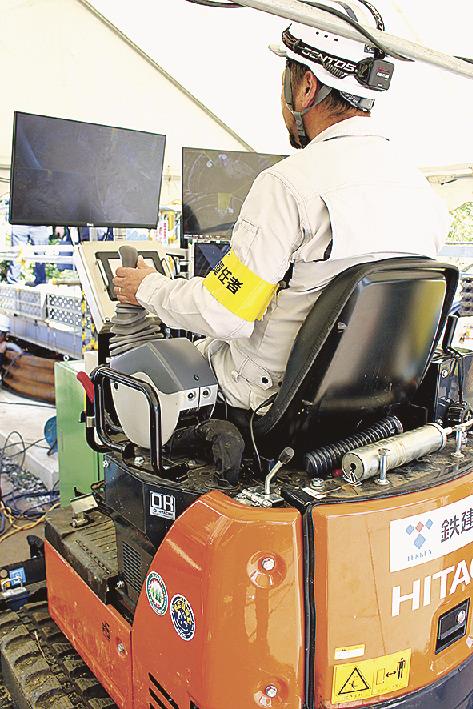Tetsuken Construction and Others / Trial Construction of Mechanical Deep-Foundation Method for Transmission Tower Bases / Dual-Arm Machine for Crushing and Loading
October 1, 2025 – Technology & Products

On September 30, Tetsuken Construction and Tohoku Electric Power Network carried out a trial construction of a mechanical deep-foundation method for transmission tower bases in Osato Town, Miyagi Prefecture. Transmission companies and contractors specializing in tower construction were invited to observe. Using a dual-arm excavator equipped with a bucket and a breaker, attendees confirmed excavation, soil removal, and backfilling with grout. The work was handled by J-Tech (Chiyoda-ku, Tokyo; President: Shinji Miyake), which manages this construction method, with adoption planned as early as spring 2026.
The mechanical method for hard ground and mountainous terrain, called “Shinso-MaN W”, was developed by six companies including Tetsuken Construction, Hitachi Construction Machinery Japan, Nippon Steel Materials, and Chumu Kenki. It is a patented comprehensive mechanical method that handles excavation, soil removal, earth retention, and backfilling, offering both workability and safety.
The construction speed is 1.0–1.5 meters per day (vs. 0.5 meters for manual excavation). The workforce required is one foreman and two workers (compared to one foreman and five workers manually). Costs are reduced by about 20% compared to manual excavation. It is applicable to piles with a diameter of 2.5–3 meters and lengths of up to 30 meters. Tests are underway to determine soil limits, but it is expected to excavate conglomerate sandstone with an N-value of about 250 (soft rock II).

The system is divided into a “drilling chamber” for mechanical excavation and a “working chamber” for manual liner assembly and grout injection. A two-tier structure places the working chamber above the drilling chamber. The drilling machine is equipped with two arms: a breaker for crushing ground and a bucket for loading excavated soil, both remotely operated by ground-based operators via camera monitoring.
Excavated soil is removed using a disposal bucket, operated by button control from the surface, running along rails installed in the liner with a high-speed winch. This eliminates the need for workers to enter the drilling chamber. Safety has also been enhanced with a head guard above the working chamber to prevent falling debris during lifting operations.
The trial excavation reached about 9 meters deep. The breaker crushed the ground, the bucket removed soil, and the working platform was lowered using a descent jack to secure the working chamber, where workers assembled the liner and performed backfilling.
Tatsushi Nagao, Managing Executive Officer and Director of the Construction Technology Center at Tetsuken Construction, commented:
“Although there are still points to verify, such as cycle time and equipment arrangement in narrow mountain yards, we are almost ready for practical use.” He added that feedback from observers would be incorporated into future development.






